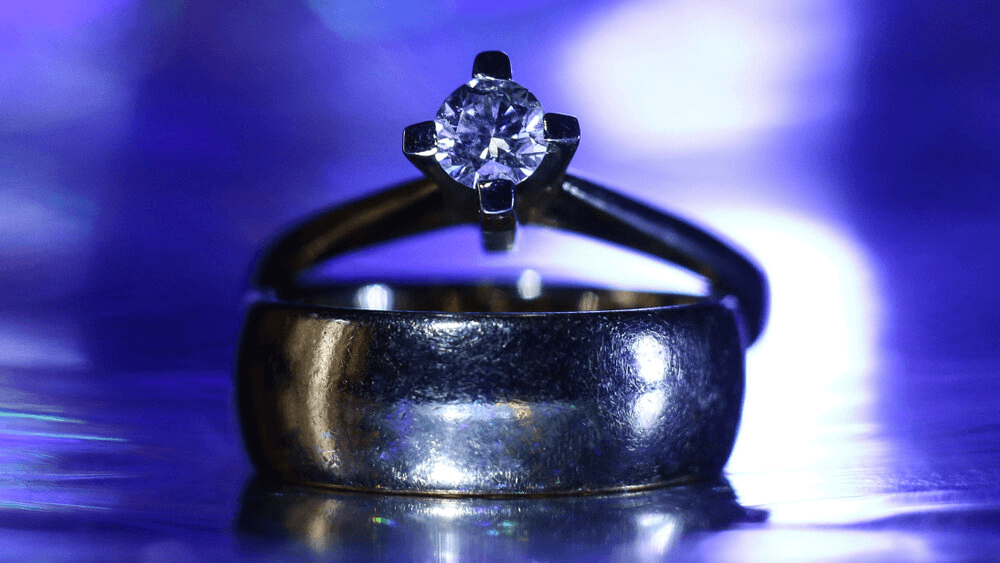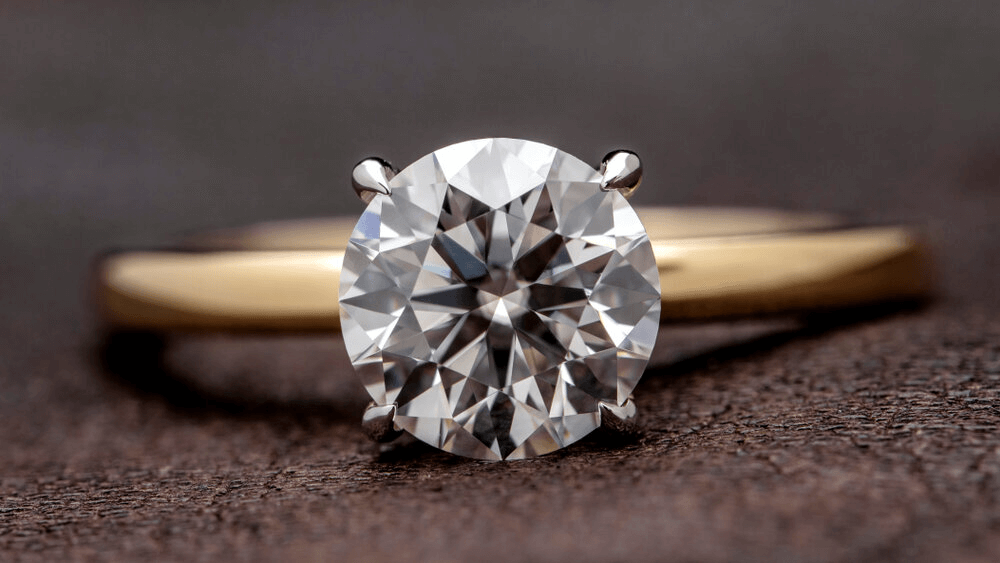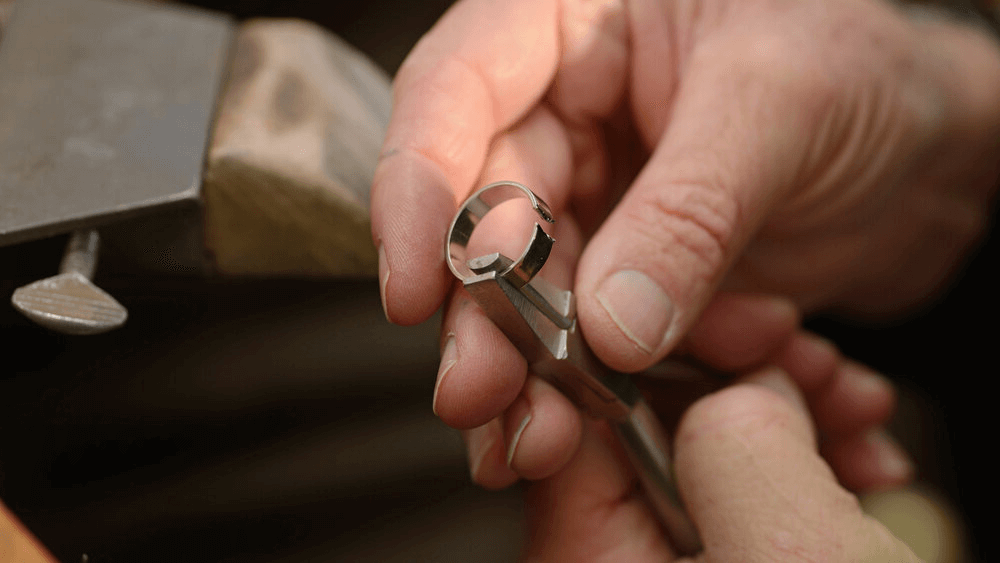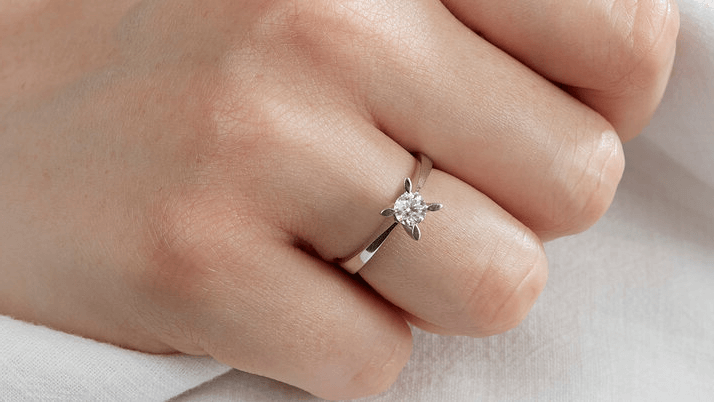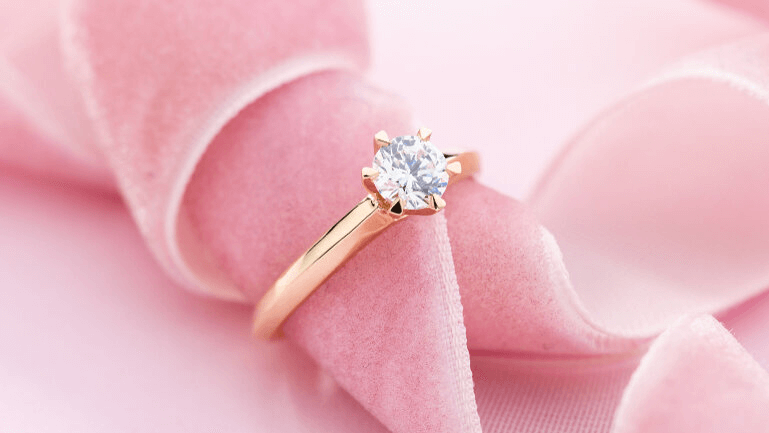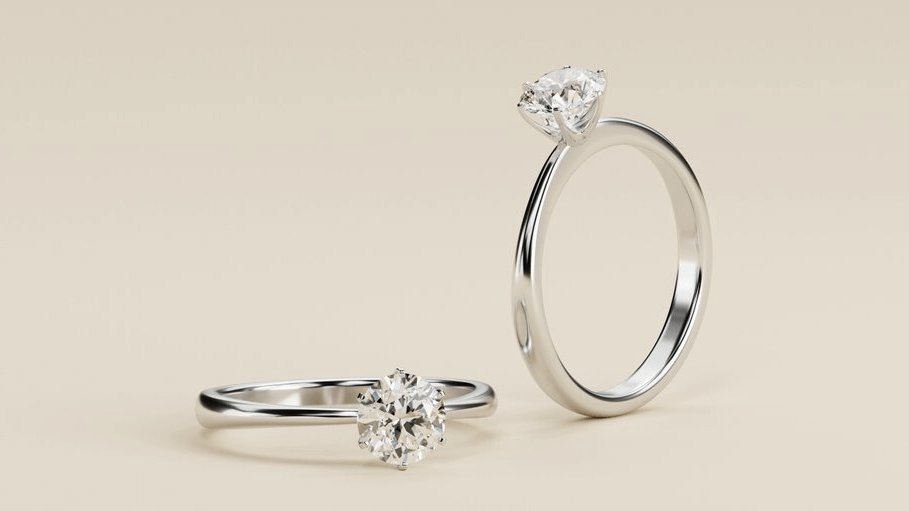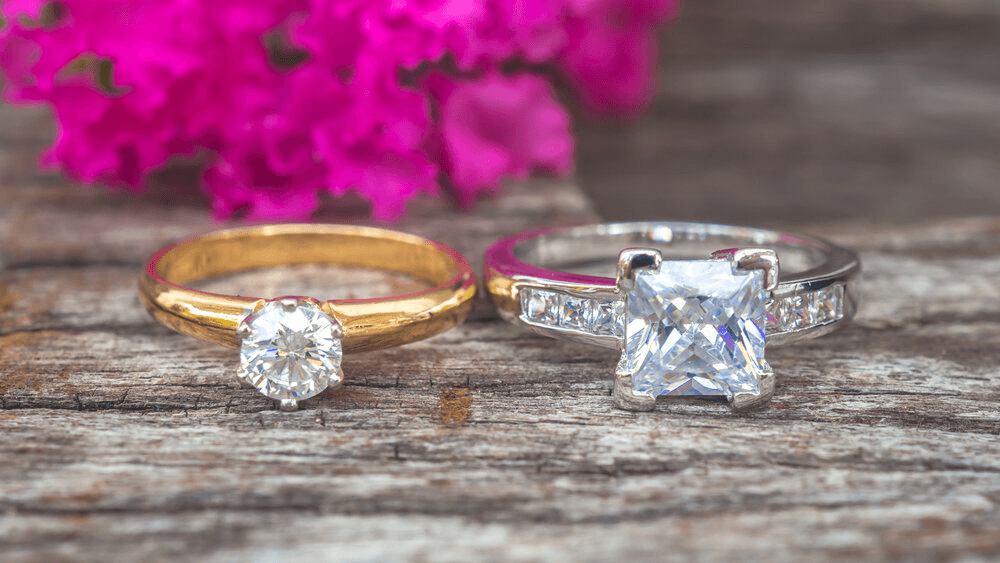18K vs 24K Gold: Which is Best for Your Forever Ring?

By Gary A.

Edited by Olivia H.
Published Aug 13, 2024
Edited on Dec 18, 2024
When it comes to selecting the perfect engagement ring, the choice between 18K and 24K gold is more than just a matter of taste—it’s about finding the right balance of beauty, durability, and timeless appeal.

Navigate this guide:
- 6 Quick Tips for Buying a Gold Engagement Ring
- Introduction to Gold in Jewelry Making
- Unraveling the Mystery: 18K vs 24K Gold
- Making the Choice: 18K Gold for Engagement Rings
- The Splendor of 24K Gold in Jewelry
- 8 Frequently Asked Questions about 18K vs 24K Gold
Before we go deeper, here are key tips to aid your decision-making:
6 Quick Tips for Buying a Gold Engagement Ring
Tip 1: Understand the Purity:
- 18K Gold: Contains 75% gold mixed with 25% other metals. It’s marked as “750” to indicate its purity.
- 24K Gold: This is pure gold, with no mix of other metals. It’s often marked as “999” or “1000” to indicate its purity.
Tip 2: Consider Durability:
- 18K Gold: More durable than 24K due to the presence of other metals. It’s less prone to scratches and dents, making it a better choice for daily wear.
- 24K Gold: Softer and more malleable, making it more susceptible to scratches and deformations. Not ideal for an engagement ring that will be worn daily.
Tip 3: Examine the Color:
- 18K Gold: Has a slightly muted gold color due to the alloy mix, which can sometimes give it a richer appearance.
- 24K Gold: Offers a bright, vivid yellow, which is the natural color of gold.
Tip 4: Check for Hallmarks:
- Always look for hallmarks on the inner side of the ring. These markings indicate the purity of the gold. For 18K, you might see “18K”, “750”, or similar. For 24K, look for “24K”, “999”, or “1000”.
Tip 5: Consider Allergies:
- If the wearer has metal allergies, especially to nickel or certain other metals, 18K might be a safer choice as it can be alloyed with hypoallergenic metals. However, always inquire about the specific alloys used.
Tip 6: Budget Considerations:
- 24K gold is generally more expensive than 18K due to its purity. However, the design, craftsmanship, and brand can also influence the price. Determine your budget beforehand and decide which karat offers the best value for your needs.
With these tips in mind, let Jeweler AI help you find the perfect engagement ring within your budget:
Introduction to Gold in Jewelry Making
There’s nothing like gold. Thousands of years of human history can’t be wrong – as a species, we just love the look, feel, luster and social status that only gold can bring. True, these days, engagement rings and wedding bands are made out of a much wider variety of options, from platinum to titanium, but, really, does anything else have quite the same ring to it as the phrase, ‘solid gold’?
The Significance of Karat in Gold Purity
We’ve put together a full guide to gold, and how to unravel the topic of gold purity that’s well worth reading if you know you’re going to focus on finding a gold engagement ring or wedding band. For now, we’ll run through the basics.
Karat refers to the amount of gold versus the amount of alloying metal in a piece of gold, or gold jewelry. Unlike some other metals, gold isn’t particularly strong. In most cases, gold is mixed with other, strengthening metals to dilute its color and bring that long-term durability we need from fine jewelry.
This is much more common than you might realise. Most jewelry stores don’t offer any 24 karat gold, since it’s only used in very special circumstances within certain cultures.
There are a total of 24 karats in a piece of gold. If the gold hasn’t been alloyed with any other metals, then it is known as 24 karat gold. If the gold is labelled 18 karats (or 18k), then that means it features a ratio of 18:6, with a lot more gold than alloy. In other words, 18K is 75% gold, 25% alloy.
For jewelry, the standard karat types for gold are 24K, 18K, 14K and 10K, although you can also find other karat types like 22K or 9K.
How Gold Karat Affects Your Jewelry Choice
Put simply, the higher the karat type, the softer the end result. 14K is stronger than 18K, and 18K is stronger than 24K.
But the higher the karat type, the more diluted that distinctive yellow coloring will be. This isn’t the case for rose gold, which tends to appear more vividly pink at lower karat types.
24K (pure) gold is a very rich orange color. The gold we’re used to seeing is paler and more versatile.
Unraveling the Mystery: 18K vs 24K Gold
So, with the basics covered, which one is right for you?
The Composition and Color of 18K Gold
18K gold is primarily gold, but alloying metals like zinc, silver, nickel, copper and platinum will lend the metal strength and durability, and soften its hue. The exact combination of alloying metals will vary from piece to piece, so you may want to inquire further if your partner has specific allergies to metals.
18K gold has a bold, sumptuous color, but it’s more yellow than orange and, as a result, easier to pair with a range of outfits and colors. When shoppers realize what 24K looks like, they tend to favor the appearance of 18K – and, of course, the price.
The Pure Allure of 24K Gold
Nevertheless, the idea of owning a piece of pure gold has a certain ring to it. Gold possesses a very high social status – one that isn’t rivalled by any other metal – and a lot of us love the idea of being able to say, ‘yes, it’s pure gold’.
But keep in mind that very few people will ever say that about a piece of jewelry – even if it’s purchased from one of the high-end, designer brands.
Also, keep in mind the fact that pure gold features a very un-versatile color. Since most of us are so accustomed to seeing 18K, 14K, and 10K gold out in the world, actually coming across 24K gold can feel jarring and odd.
Practical Uses: Jewelry, Investment, and Beyond
While 24K gold is used in certain ceremonies and traditions – for instance, in Hindu weddings, Mangalsutras (fine jewelry collections) made from pure gold are worn by brides as a symbol of their new and permanent union with the groom – it’s still rare to come across.
Instead, 24k gold is better used as an investment. Gold holds a very strong position in the global market, and makes for a perfect way to store wealth and protect it against the ebb and flow of fiat currency.
Still, this gold is stored in a very secure way and not brought out as a way of flashing wealth and status.
Making the Choice: 18K Gold for Engagement Rings
18K is the only sensible choice for your engagement ring. Yes, it’s still weaker than 14K or 10K, but those alloying metals make it substantially stronger than 24K gold.
Why 18K Gold is Preferred for Daily Wear
Let’s break it down into the key points…
- It’s stronger
- It’s more versatile
- A lot of people prefer the color
- You have the option of rose gold, which can’t be obtained at 24K
- It still holds its value, and a high social status
- Just because it’s not pure gold, doesn’t mean it’s not solid gold
Balancing Cost and Quality with 18K Gold
Keep in mind that, despite the fact it isn’t 24K gold, 18K gold still commands a high price. It’s got a high gold content – and, often, the highest gold content of any engagement ring. 22K gold engagement rings do exist, but they’re more of a risk.
You might want to consider opting for 14K gold instead. It’s a lot more affordable, and the gold content still outweighs the alloy at a ratio of 14:10. We often pitch 14K as the ultimate balance of cost and quality; that distinctive yellow hue is still very evident, but the cost is a lot lower – and, accordingly, the metal’s strength is higher.
The Splendor of 24K Gold in Jewelry
If you’ve ever seen 24K gold jewelry in person, then you’ll know that it really is unlike anything else in this world. Hindu weddings laced with intricate, masterful pure gold jewelry are spectacular visions of color, sumptuousness, and celebration. Even if you prefer the color of 18K gold, there is absolutely no denying the eye popping appeal of pure gold.
Keep in mind that these pieces are major investments, and that they are taken care of throughout the years and generations in order to preserve them as beautifully as possible.
Enjoy being able to witness the sight of 24K gold shining in the daylight, but don’t feel tempted to entrust a very valuable diamond – and a lot of sentimental meaning – to a metal that simply isn’t designed to stand up to life’s daily demands on its own.
Can You Wear 24K Gold Every Day?
No, 24K gold is far too soft and malleable to be worn everyday – or even semi-regularly. Unless it’s for a very specific purpose, we wouldn’t recommend anyone spends their money on 24K jewelry. Even though it looks beautiful and luxurious, it won’t look good for long. 24K jewelry that has been over worn will start to look low-quality, warped, dented and dull from scratches.
Don’t trust any jeweler who tries to tell you a 24K engagement or wedding ring. It’s either not real 24K gold, or it’s a poor investing. Either way, that jeweler is not acting in your best interests.
Is 18K Gold Better for Daily Wear?
Yes, 18K gold is one of the best carrot types for an engagement ring with wedding band. It’s got a much higher purity than 14K or 10K gold, so it is the weaker option, but it’s still alloyed with enough strengthening metals to stand up to daily wear and tear. 18K Gold has a beautiful, rich color that a lot of people prefer to pure gold – it’s nowhere near as garish or deep in tone.
Choosing Between 18K and 24K Gold for Value
if you’re trying to decide between 18K and 24K, then trust us when we say there’s no question about it. Even the debate between 18K and 22K is relatively cut and dry.
24K is too soft, too weak, and too easily broken. 18K is stronger, more affordable, and easier to wear on a daily basis thanks to its softer, cooler color.
Our Expert Take
It’s a rite of passage for first-time jewelry shoppers to find out that their dreams of presenting their partner with a pure gold ring, no matter the cost, have to be squished. It’s for the best, of course – nobody wants you to look down one day, and see dents, scratches, and warping destroying what was once an exquisite ring design. Resetting that diamond will be costly, and drain a lot of sentimental power from the ring.
Don’t be tempted by 24K gold. 18K really is one of the best options, whether you’re looking for yellow gold or rose gold.
8 Frequently Asked Questions about 18K vs 24K Gold
- Q: Can I wear a 24K gold engagement ring every day?
- A: 24K gold is very soft and prone to scratching and deforming, making it less ideal for daily wear compared to more durable options like 18K gold.
- Q: Is 18K gold real gold?
- A: Yes, 18K gold is real gold. It contains 75% pure gold mixed with 25% other metals for added durability and color variety.
- Q: What’s the main difference between 18K and 24K gold?
- A: The main difference is purity; 24K gold is 100% pure gold, while 18K gold contains 75% gold and 25% other metals.
- Q: Which is better for an engagement ring, 18K or 24K gold?
- A: 18K gold is better for engagement rings due to its balance between purity and durability, making it suitable for daily wear.
- Q: Will 24K gold tarnish or change color over time?
- A: Pure gold (24K) is highly resistant to tarnishing and discoloration, maintaining its bright yellow color over time.
- Q: How can I tell if my jewelry is 18K or 24K gold?
- A: Check for hallmarks inside the jewelry piece. “750” indicates 18K gold, and “999” or “1000” signifies 24K gold.
- Q: Is 24K gold more expensive than 18K gold?
- A: Yes, due to its higher purity level, 24K gold is generally more expensive than 18K gold.
- Q: Can someone with metal allergies wear 18K gold?
- A: 18K gold can be a good choice for those with metal allergies, especially if it’s alloyed with hypoallergenic metals. Always confirm the alloy components with the jeweler.
Dive into the elegance of 18K and 24K gold with Jeweler AI. Start crafting your dream ring today!
FOLLOW-UP GUIDE SERIES

